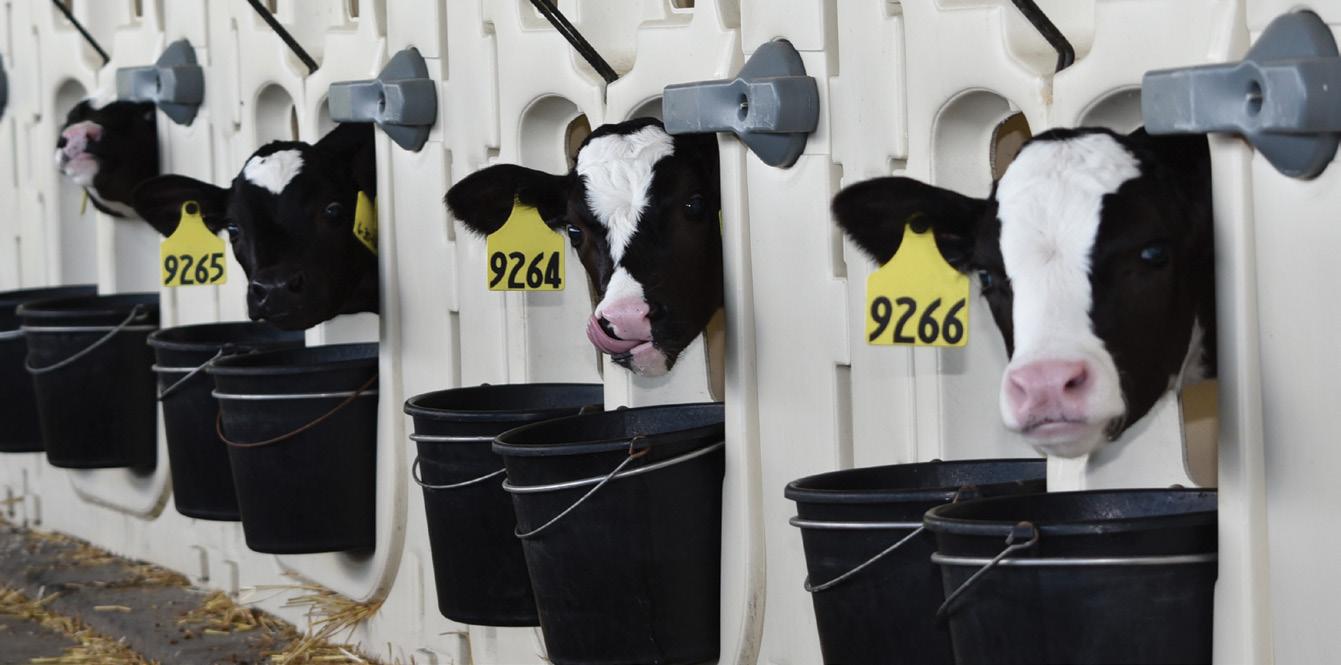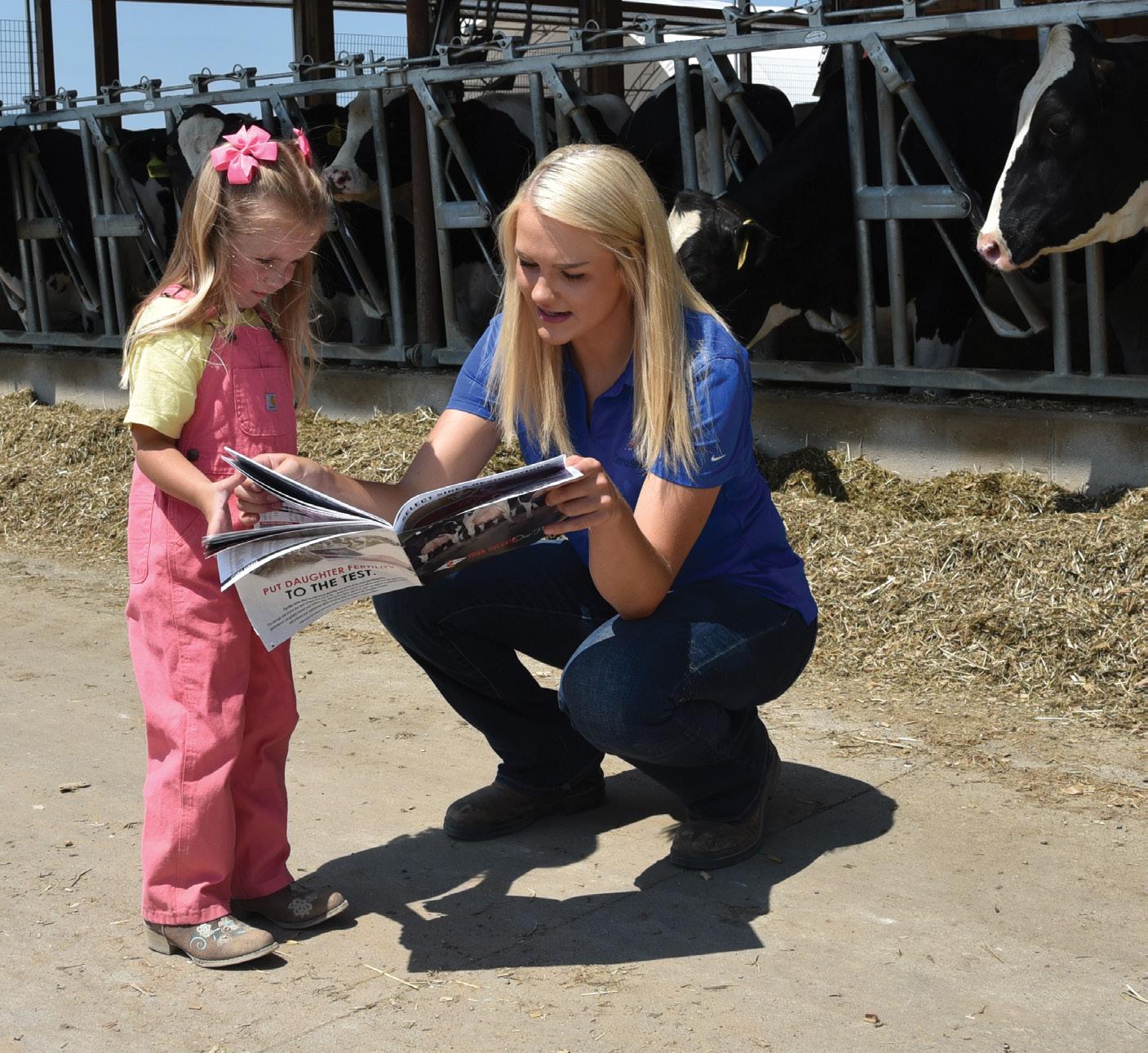





We installed CowManager® across our entire herd, including youngstock, and the results have been outstanding,” said Rose Peterson, Peteland Dairy, LLC, Monroe, Wis. “Our pregnancy rate has increased by almost 3% in just eight months of having the system, which in turn has required fewer hormone shots.”
Altogether, the Peterson family installed 1,050 CowManager sensors. “For youngstock, CowManager has been especially valuable in helping us quickly identify calves with respiratory issues, our biggest challenge,” added Rose. “On busy days, whether rushing through chores or feeding in the dark, the system alerts us to sick calves we might otherwise miss.”
With a young family in tow, for Rose and her husband, Dan, CowManager has been an extra set of eyes on the cows. “The CowManager tag also helps us detect and treat illnesses like mastitis, DAs, milk fever, and more before symptoms are even visible to the naked eye. It’s like having an extra employee who never takes a day off, but at half the cost. Thanks to this system, our herd numbers have grown, our death loss has declined, and reproduction has improved.”
If you haven’t made the call for CowManager, yet, Rose has something to say, “Whenever I’m asked if CowManager is worth it, I don’t hesitate to say, ‘YES’. I truly don’t know how we ever managed our herd without it.”
Connect with your CentralStar team or your local CowManager Specialist to learn how this technology can support improved reproduction and a healthier herd at all ages.
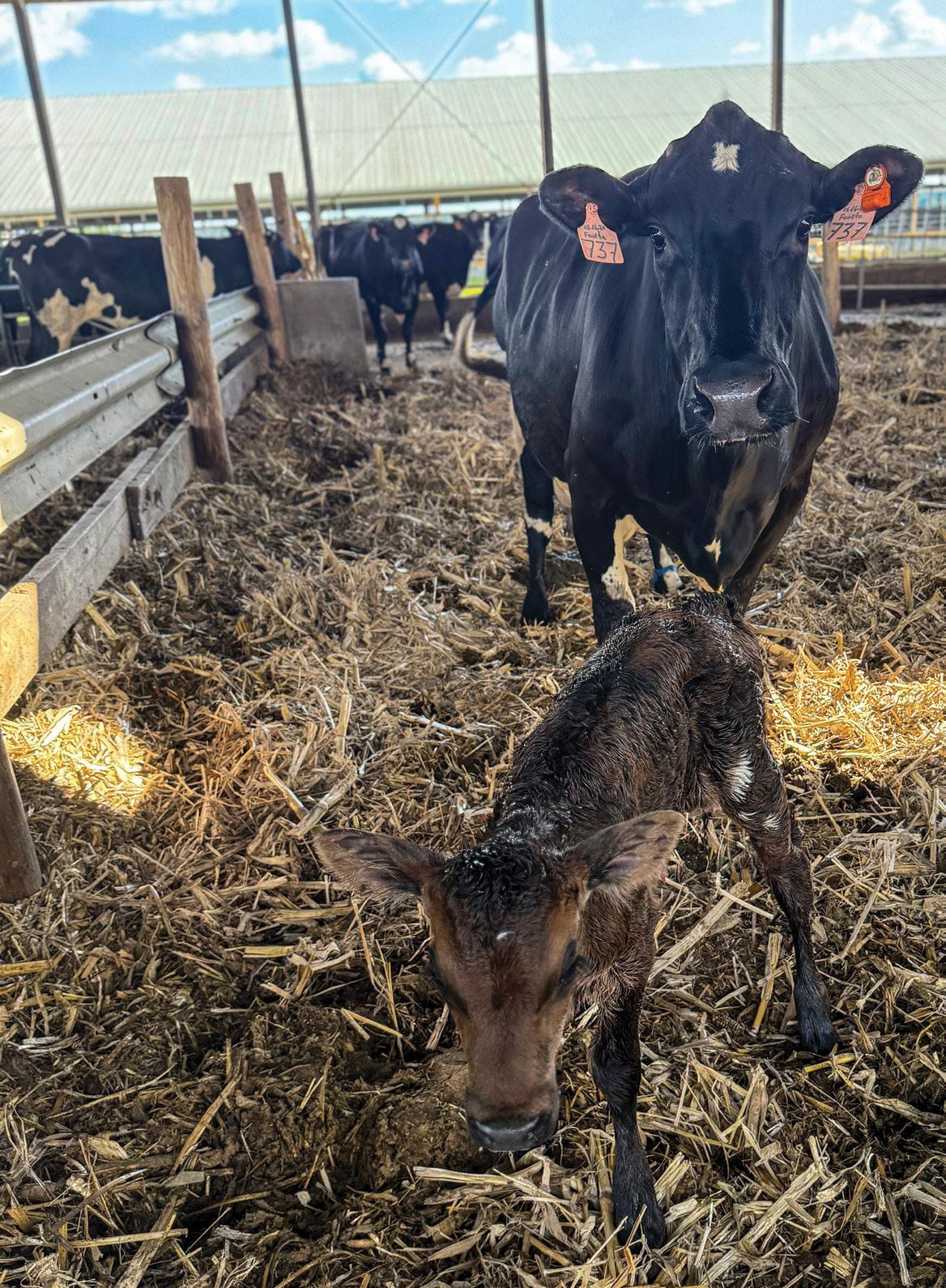

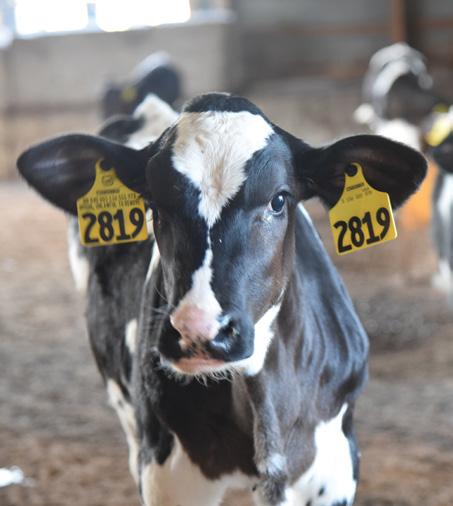

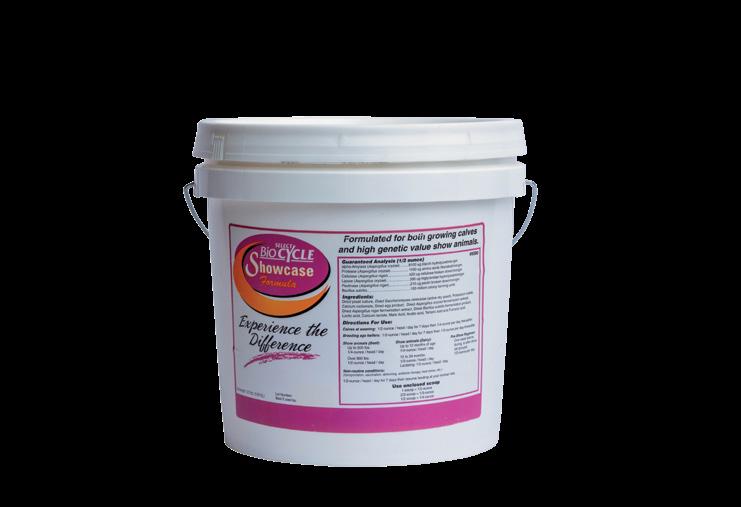
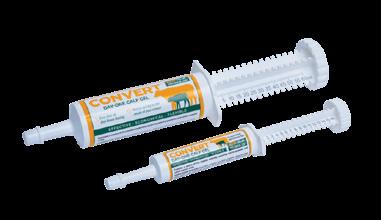
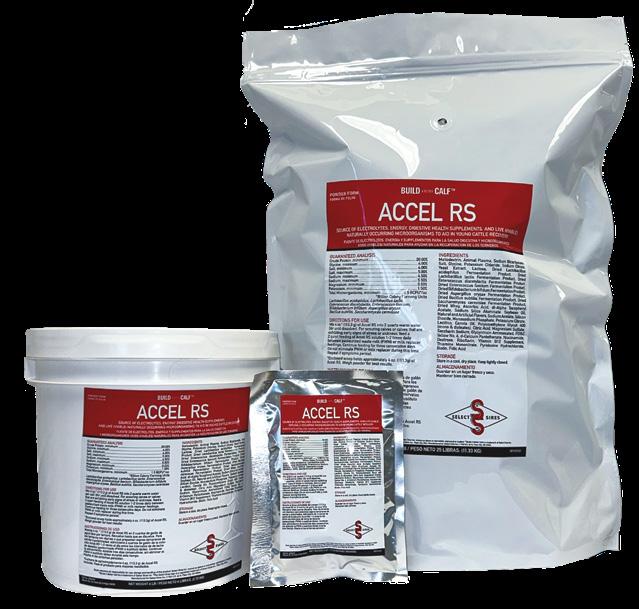
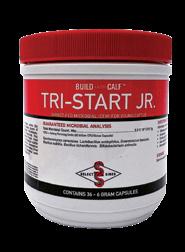



CONVERT™ BIG Calf Powder
u Promotes digestive tract and whole animal health
u Fosters feed intake and calf weight gain pre-weaning
u Mix in whole milk or milk replacer
CONVERT™ Day One Calf Gel
u Inoculates digestive tract, restricting pathogen growth
u Improves appetite
u Contains egg IgY antibodies
AC9057 - Single-dose 15cc
AC9006 - Multi-dose 60cc
BioCycle® Showcase
/ $7.20
/ $16.65
u Supports consistent intake during travel and feed/ water changes
u Enhances hair quality and growth
AC9300 – 14.5lb pail
Tri-Start Jr. - Maroon Bolus
$180.00 / $162.00
u Stimulates feed intake during periods of change
u Jump starts stalled digestive system
u Use during stress: dehorning, castration, etc.
A0052 – 36ct jar
Tri-Purify - Blue Bolus
u Enhances digestive tract
u Improves immune function
u Stimulates a redo at signs of scouring
A0051 – 36ct jar
$49.00 / $44.10
$89.50 / $80.55

Tri-Start Jr.+ Paste
u Stimulates feed intake
u Enhances digestive tract environment
u Contains egg IgY antibodies
Accel RS
u Aids in hydration and digestive health
/ $17.55
u Works to restore, re-energize, recolonize and rehydrate
u Facilitates gut repair, reduces peak diarrhea volume
A0596 - Single-dose 4oz
A0599 - 6lb pail
$4.00 / $3.60
$65.00 / $58.50
A0597 - 25lb bag $164.00 / $147.60
Calf Accellyte
u Source of energy, electrolytes, and fructo-oligosaccharides for nutritional support
u Feed in water when calves are dehydrated
A0053 - 3.6lb jar
A0054 - 10lb pail
$31.00 / $27.90
$78.00 / $70.20
A0055 - 25lb pail $169.50 / $152.55
u Nutraceutical to preserve respiratory health, alleviate symptoms, and support the recovery process
u All natural, no VFD required
A0041 - 22lb bag
A0040 - 4.4lb bag
$299.50 / $269.55
$74.00 / $66.60

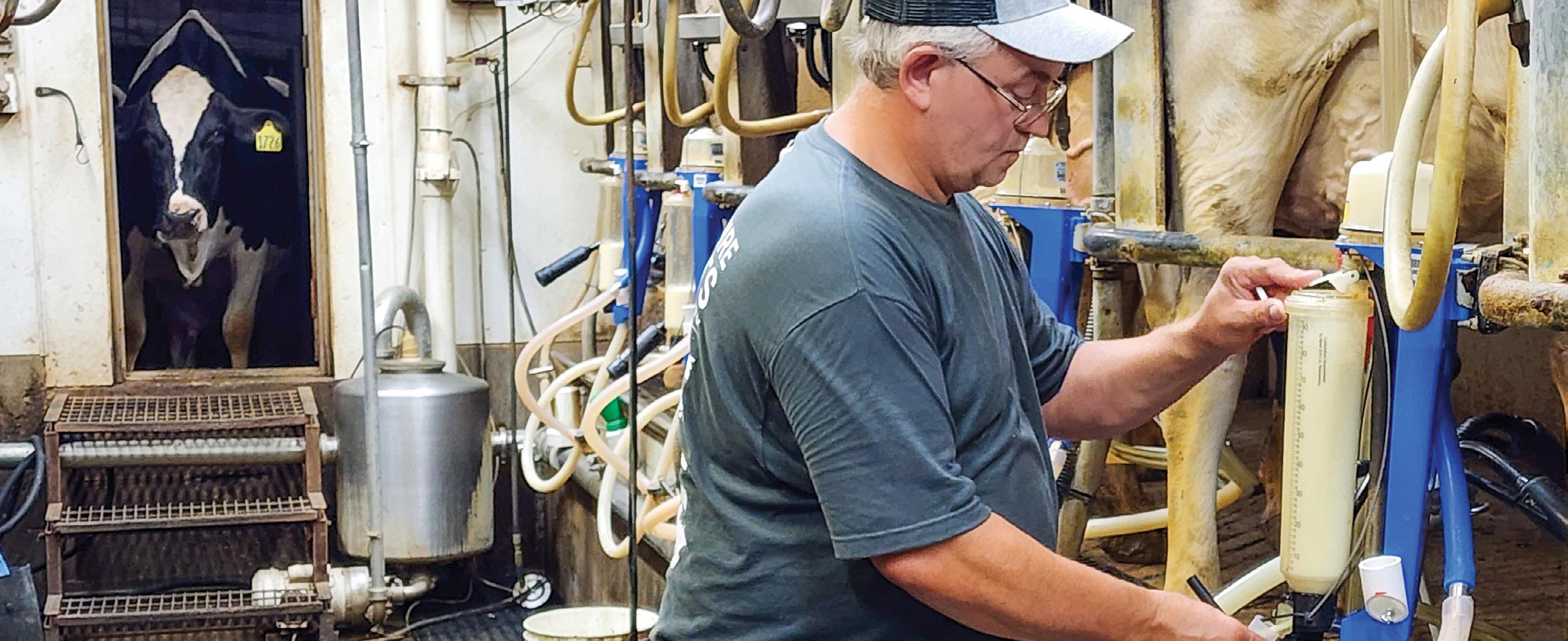
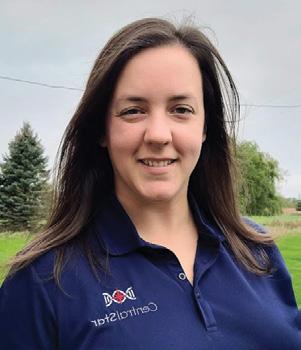
Your milk check isn’t just a number, it reflects cow health, herd management, and genetics. Producers often point to aboveaverage components, low SCC, and residuefree milk as hallmarks of quality.1 These traits are more than “nice to have,” they drive milk quality and directly influence your pay. The good news? You can influence all three through strategic genetic selection, routine testing, and proactive management.
Genetics and components
Genetics play a major role in producing above-average fat and protein levels and the Herd Health Profit Dollars® (HHP$®) index helps you make decisions that matter most for the market. Compared to other popular indexes, HHP$ has a more modern and balanced weighting for components, putting greater emphasis on protein, which reflects the growing demands of processors and consumers. It also prioritizes mastitis resistance and SCC. Not only does mastitis hinder milk quality, but it ranks among one of the top reasons cows leave your herd, making it fiscally prudent to select genetics to protect against it.
Low-SCC is essential for protecting both milk quality and your milk check. Routine DHI testing allows you to track SCC trends over time, identify high-risk cows for targeted testing, and monitor how management strategies are performing.
Monthly bulk tank screenings with Mastitis PCR testing complement DHI by establishing a farm-specific baseline for pathogen levels. With these benchmarks, you can spot changes early and adjust protocols before problems escalate.
The type of mastitis testing you choose should match the situation. When you bring in fresh cows or heifers, Pooled Contagious 3 testing can catch contagious pathogens before they spread. If your bulk tank SCC rises or clinical mastitis cases
increase, using Pooled Complete 16 testing on high-SCC cows provides a zoomed-in snapshot of pathogens, guiding treatment and management decisions. By combining these approaches, you maintain vigilance across the herd while keeping testing practical and targeted.
Managing contagious and environmental pathogens
Some pathogens spread rapidly in the parlor, while others point to environmental or management issues. Contagious pathogens such as Staph aureus, Strep ag, and Mycoplasma bovis can move quickly between cows. Strep ag responds well to early treatment, but Staph aureus and Mycoplasma often require segregation or culling to protect the herd.
Environmental pathogens including Streptococcus, Enterococcus, Klebsiella, and E. coli thrive when bedding, maternity pens, or alleys are not clean and dry, leading to higher SCC and new infections. Maintaining consistent hygiene, proper bedding management, and clean housing are key prevention strategies.
Other pathogens, like Prototheca and Pseudomonas, originate in water sources but can behave like contagious pathogens once they reach the udder, often causing chronic infections. Yeast is also appearing more frequently in herds with elevated SCC, typically linked to teat-end damage or inconsistent hygiene during intramammary procedures. Recognizing these risks and adjusting management practices accordingly helps you minimize chronic infections and protect herd health.
Bottom line
Your milk check tells the story of your herd and what it says matters. By combining routine DHI and mastitis testing with genetics focused on health and components, you can protect your cows, improve milk quality, and ensure the product you deliver is what processors and consumers value most.
1Progressive Dairy, https://www.agproud.com/articles/37632-what-is-quality-milk-it-s-at-least-low-scc
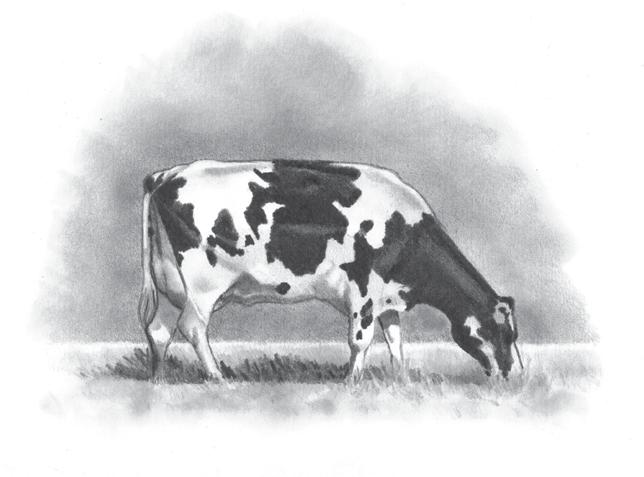
Your herd’s performance is more than what meets the eye. Without complete data, problems go unnoticed, and opportunities are missed. DHI data fills the gaps, giving you a complete picture of each cow’s performance. Get the insights you need to make smarter, more profitable decisions with routine DHI testing.
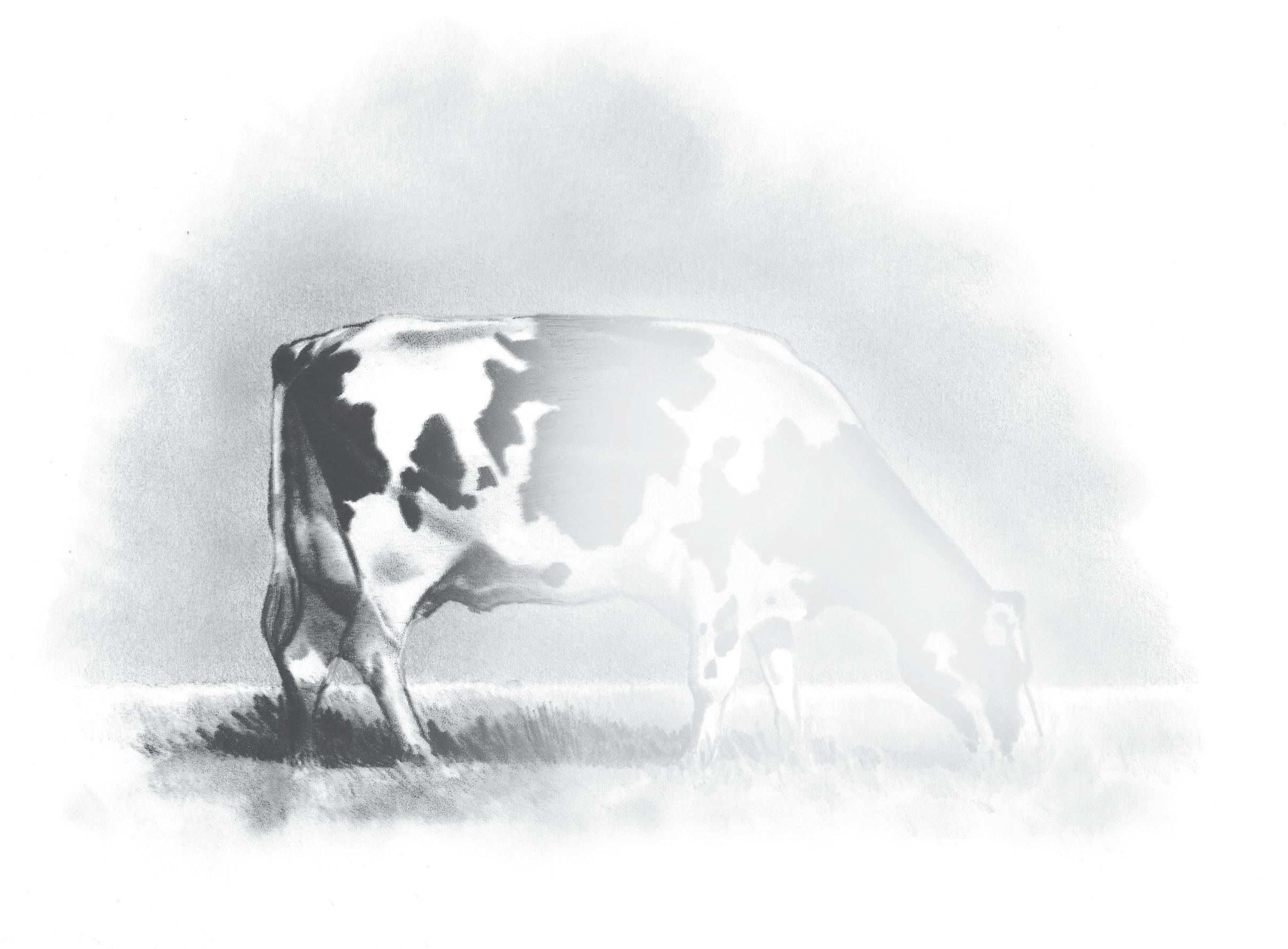
u Early-lactation monitoring
u Spotting ketosis & transition troubles
u Reproductive performance
u Reduce labor, improve performance
u Culling decisions, inventory management
u Genetic potential
u Keep rations on point
u Early mastitis detection
u Keep data fresh
u Late-lactation insights





800.631.3510
1Preventive Veterinary Medicine, Vol. 122, Issue 3, 12/2015, Pages 257-264; 2https://extension.umn.edu/dairy-milking-cows/transition-dairy-cows#fresh-cow-healthand-events-1741212; 3https://www.thebullvine.com/news/fresh-milk-fat-protein-ratio-identify-ketosis/; 4https://johnes.org/dairy/control/; 5https://extension.umn.edu/ animals-and-livestock-news/what-makes-feed-efficient-cow; 6https://www.thebullvine.com/news/why-crowded-cows-are-a-growing-concern-the-impact-on-dairy-farmproduction/; 7https://pubs.nmsu.edu/_d/D302/index.html; 8Grant 2004; 9https://www.nmconline.org/wp-content/uploads/2023/06/IN-PROGRESS-Fact-Sheet-TheValue-and-Use-of-Dairy-Herd-Improvement-Somatic-Cell-Count-Formatted.pdf
Tom Brown, Genetic and Reproductive Consultant

Your DHI records are more than just numbers, they’re a roadmap for ration and herd management. Butterfat, protein, and the fat-toprotein ratio give early warnings when things aren’t balanced, letting you act before production or cow health suffers. By regularly reviewing DHI data, spotting trends, and taking action with your nutritionist, you can finetune rations, prevent metabolic issues, and keep your herd performing at its best. Key indicators to watch:
u Low milk fat may indicate inadequate effective fiber, too much rapidly fermentable starch, or rumen acidosis.
u Low milk protein can signal insufficient metabolizable protein, poor amino acid balance, or inadequate energy intake.
u Fat-to-protein inversion (fat below protein) is often an early sign of negative energy balance or subclinical acidosis, especially in early lactation.
These component patterns show up in your DHI data. Reviewing printed reports or custom reports you build in DART makes it easy to use your data. The 202-Herd Summary (Table 1) and 312-Lactation (Table 2) reports can help you see fat and protein trends, flag inversions, and identify cows or groups at risk. By reviewing DHI data regularly, you can detect early signs of nutritional or metabolic issues and take steps to keep rations and herd health on track.
u Identify cows or groups at risk by using component trends to flag inversions or abnormal values.
u Investigate rations and feeding practices by working with your nutritionist to check fiber, starch, protein sources, and energy density.
u Monitor cow health by testing fresh cows for ketosis, track body condition score, and watch for digestive upsets.
u Adjust feed management to keep feeding consistent, providing adequate bunk space, and mitigating heat stress.
u Track outcomes by watching patterns over weeks or months, not just a single test day, to confirm improvements.
As valuable as your DHI records are in helping to keep rations on point, they aren’t the sole solution. In my 11 years managing dairies, I found the most success in keeping production steady when I implemented protocols for continually checking forage dry matter. A Koster Test is a feed man’s best friend, doing this at least twice a week helps keep rations accurate and cows consistent, which shows up in DHI trends. TMR audits were another tool I initially found tedious but realized were invaluable. Every mixer is different: Are we overmixing or undermixing? What about particle length? Having the appropriate mixing time is crucial to maximizing production and ensuring DHI data reflects the ration accurately.
Another area that surprised me when I was managing herds was how little many of us know about our protein mix. I was just as guilty. We put a lot of trust in our nutritionists, and while that’s helpful, ignorance isn’t bliss. Today, when I ask producers if they have mycotoxins in their feed, they often say, “Yes, but the nutritionist has something in there to take care of that.” What is this “stuff”? Mold binders are the short answer, but do you know the feeding rate, the binder being used, or whether it’s
effective? I’ve found that supporting the cow’s immune system through tools like DTX™ or BioCycle® Plus is the best recipe for gut health. Feeding software is another valuable tool. It allows for precise ration balancing and better tracking of feed inventories. A nutritionist I respect once told me many people spend more time trying to shortcut the program instead of using it to its full capacity. Is this happening on your farm?
Even the best rations can’t perform if daily management isn’t consistent. How does the bunker or feed pile face look? I used to joke with employees that I cared more about the face of the pile than the one on my head. Truth is, that pile has a bigger ROI.
In the summer months, are you protecting TMR from excess heating? Are cows fed once or twice per day during the dog days of summer? Cleaning bunks daily is a simple but critical step, monitoring refusals and keeping feed fresh helps maintain intake and ensures your DHI numbers reflect actual nutrition, not feed spoilage or refusal.
When the herds I worked with were DHI testing, the butterfat and protein numbers were my personal report card. They showed whether cows were getting what they needed and if my management was consistent. Today, your DHI records can do the same for you. Use your DHI data, track trends, and let it guide your decisions, otherwise, you might be missing a key part of the picture.
The 202-Herd Summary Stage of Lactation Profile shows % fat and % protein side by side, making it easy to compare the two. Nutrition has a major impact on these values, and an abnormal fat-protein inversion can serve as an early warning of potential metabolic issues.
Table 2. DHI-312 Lactation Report
The 312-Lactation report flags cows with fat-to-protein inversions, making it easy to spot potential nutrition or metabolic issues early.

Located in Waunakee, Wis., Maier Farms is a multi-generational dairy committed to cow longevity and team-driven success.
Honored as one of CentralStar’s ReproStar Award winners in 2025, the farm has achieved impressive statistics, including a 42% pregnancy rate, 73% submission rate, and 57% first-service conception rate.
This Q&A is adapted from the Select Sires Podcast interview with Select Sires Genetic Specialist Ethan Haywood; Patrick Maier, Maier Farms; Herd Manager Max Shenkenberg; and CentralStar Regional Consulting Manager Susie Martin.
What are your goals as a dairy?
Patrick: We like to do it all in-house. We really hang our hats heavy on our team. We’ve got a really good team of people here. We do our own cropping, raise our heifers in-state, and really focus on longevity. We want to keep animals around as long as possible, making a healthy, profitable cow.
What is your reproduction program for heifers?
Max: We set calves up for success right away, dipping navels and getting a gallon of colostrum in them. Most of our young stock are raised off-site, but when they return, we get aggressive with breeding. Last year, our voluntary waiting period (VWP) was 13 months. At 393 days, they receive prostaglandin, and 70 to 75% of our first services are off that. Recently, we shortened the VWP to allow more growth before breeding, and both service and conception rates have improved.
What is your reproduction program for cows?
Max: First-lactation cows have an 84-day VWP, while secondlactation and older cows have a 70-day VWP. All cows are enrolled in a double-Ovsynch protocol for first service, with a resync at 25 days. If cows are open at 32 days, she remains enrolled. Aggressiveness and submission rate are key drivers of our success.
How does CentralStar support your program?
Susie: I’ve worked with Maier Farms for about three years, using tools like genetic audits, repro audits, and the OGP (Optimal Genetics Pathways) calculator to monitor data and provide monthly herd performance reviews. This helps the team track progress, stay proactive, and stay ahead of challenges.
Patrick: Repro results are always down the road. Having reports in your inbox regularly helps us be proactive instead of reactive.
What does sire selection look like for your herd?
Max: We were early adopters of the NxGEN® program. Since our milk goes to cheese production, components are a priority. We start with Net Merit, then look at combined fat and protein, milk, and Daughter Pregnancy Rate (DPR) as a tiebreaker. Longevity is essential. If a cow only produces one lactation, she doesn’t pay for the investment.
Susie: It’s exciting to see those choices paying off. GAMEDAY (7HO15167) daughters are now in their second-lactation and performing well, while HAYK (7HO15977) and LETCHWORTH (250HO16110) daughters are excellent two-year-olds.

A better cow for a better future.
The average productive life of cows in the U.S. is 2.3 lactations but research shows that cows reach their greatest productive potential in the third and fourth lactation. Enhance your dairy’s profitability with Select Sires’ Herd Health Profit Dollars® (HHP$®) index, designed to create cows that stay healthy, hassle-free, and exceptionally productive at every age.

What factors contribute most to your success?
Patrick: Facilities and people. We’ve invested in ventilation, both cross-vent and tunnel vent barns. We really try to let the animals be animals. We really want that genetic expression to come through. The other thing is our team. Consistency, no shortcuts, just doing the right things every day.
Max: Attention to detail. We’re still a tail-paint herd, and I enjoy that time in the barn. Training the team and giving them confidence is critical.
Susie: Communication. The Maier team asks questions, stays engaged, and maintains phenomenal compliance. Their noncompletion rate is only 6%, which is excellent.
What advice would you share with other producers?
Max: Be patient. Genetics and repro don’t show instant results. Stick with it, be resilient, and results will come.
Patrick: Build a strong team. Give people responsibility and let them rise to the occasion.
Susie: Ask for help. We have tools and expertise at CentralStar that can support producers in improving both performance and profitability.
Scan the QR code to listen to the full conversation on the Select Sires Podcast.

Genetic audit highlights your herd’s strengths and opportunities, guiding breeding decisions for deliberate genetic progress.

Repro audit checks your reproduction program, identifies bottlenecks, and suggests ways to boost efficiency and reduce days open.

OGP calculator links genetics with inventory, helping you decide which cows to breed and how many replacements to keep.

All of this available with centralstar! Let us help you accelerate your herd today!

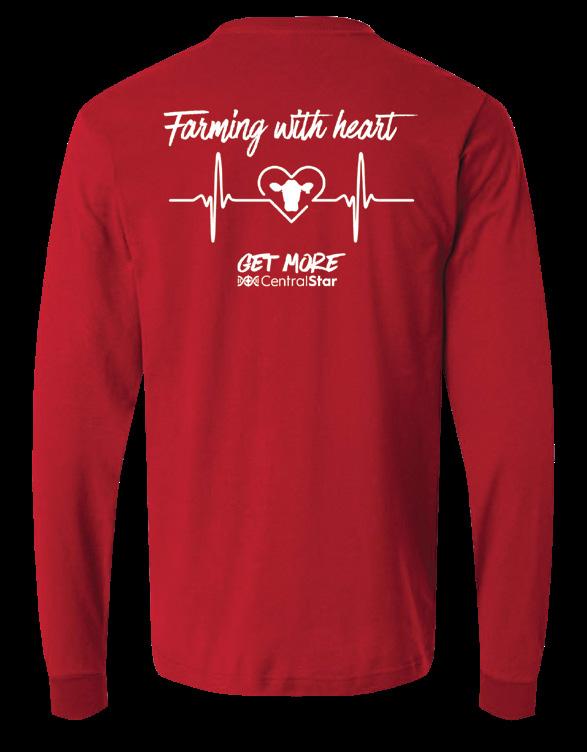
Offer available November 1 - 21, 2025. Scan the QR code or order online at https://centralstarstore.com/.







